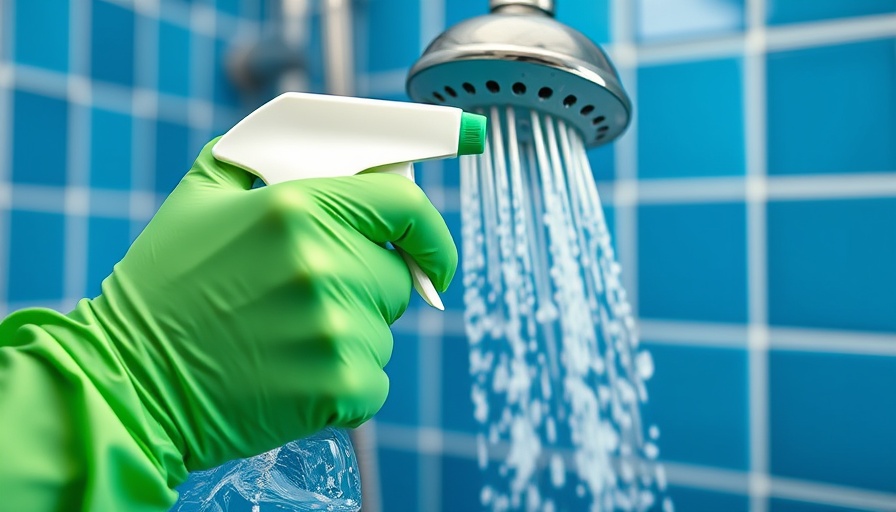
Why Clean Your Shower Head?
Many homeowners might overlook the importance of a clean shower head, yet it plays a crucial role in maintaining the overall health of your bathroom environment. A clean shower head ensures optimal water flow, which not only enhances your shower experience but also reduces the risk of mold and mineral deposits. If you notice a drop in water pressure or a change in water quality, it's time to act.
The Essentials of a Shower Head Cleaning
Imagine your shower head as the front line of your home’s plumbing health. Clogged nozzles due to lime buildup can lead to unsatisfactory shower experiences, making it essential to keep it clean. Regular maintenance also prevents more significant plumbing issues down the line.
How Often Should You Clean It?
The recommendation is to clean your shower head every six months, but if you live in an area with hard water, monthly cleanings can be beneficial. Not only does this prevent mineral buildup, but it also keeps your bathroom fresh and free of mold that can grow in damp areas if neglected.
Tools and Materials You’ll Need
Before you start, gather the following items: a gallon-size plastic bag, white vinegar (four cups), baking soda, a pitcher, a cleaning cloth, a toothpick or paper clip, rubber bands, and a wrench. Having these basics on hand makes the cleaning process quick and efficient.
Simple Steps to a Sparkling Shower Head
Cleaning your shower head doesn't have to be complex. A straightforward method is soaking the shower head in a vinegar solution. Here’s how:
- Soaking Method: Fill a gallon-sized plastic bag with white vinegar and attach it around the shower head with rubber bands. Leave it for about an hour. This will loosen any mineral deposits.
- Rinse it Out: After soaking, remove the bag and run hot water through the shower head to flush out any remaining residue.
- Deep Cleaning Option: For persistent issues, you might need to unscrew the shower head and give it a deeper clean, following inspection for any physical damage.
- Inspect for Clogs: Use a toothpick or paper clip to gently clear out clogged nozzles. Awareness of how your shower head functions makes cleaning more effective.
- Reconnect and Enjoy: Once it's clean and clear, reattach it, make sure everything is securely tightened, and then enjoy your refreshed water flow.
Don't Let Convenience Override Maintenance
While it may be tempting to ignore the small maintenance tasks around the house, keeping your shower head clean is crucial for water quality. It's a great reminder that even simple actions contribute to a healthier living environment.
Taking Proactive Steps for a Healthier Home
Cleaning your shower head can prevent larger health risks and save money on potential plumbing repairs. As a homeowner, understanding how to maintain your appliances extends their lifespan and functionality. Now that you know how to take care of your shower head, think about what other areas in your home may also benefit from regular upkeep.
Call to Action: Transform Your Shower Routine
Don't wait until you notice a problem! Make it a habit to clean your shower head regularly to ensure a refreshing cleansing experience every time. By taking these small, proactive measures, you foster a healthier, more sustainable home.
 Add Row
Add Row  Add
Add 




Write A Comment